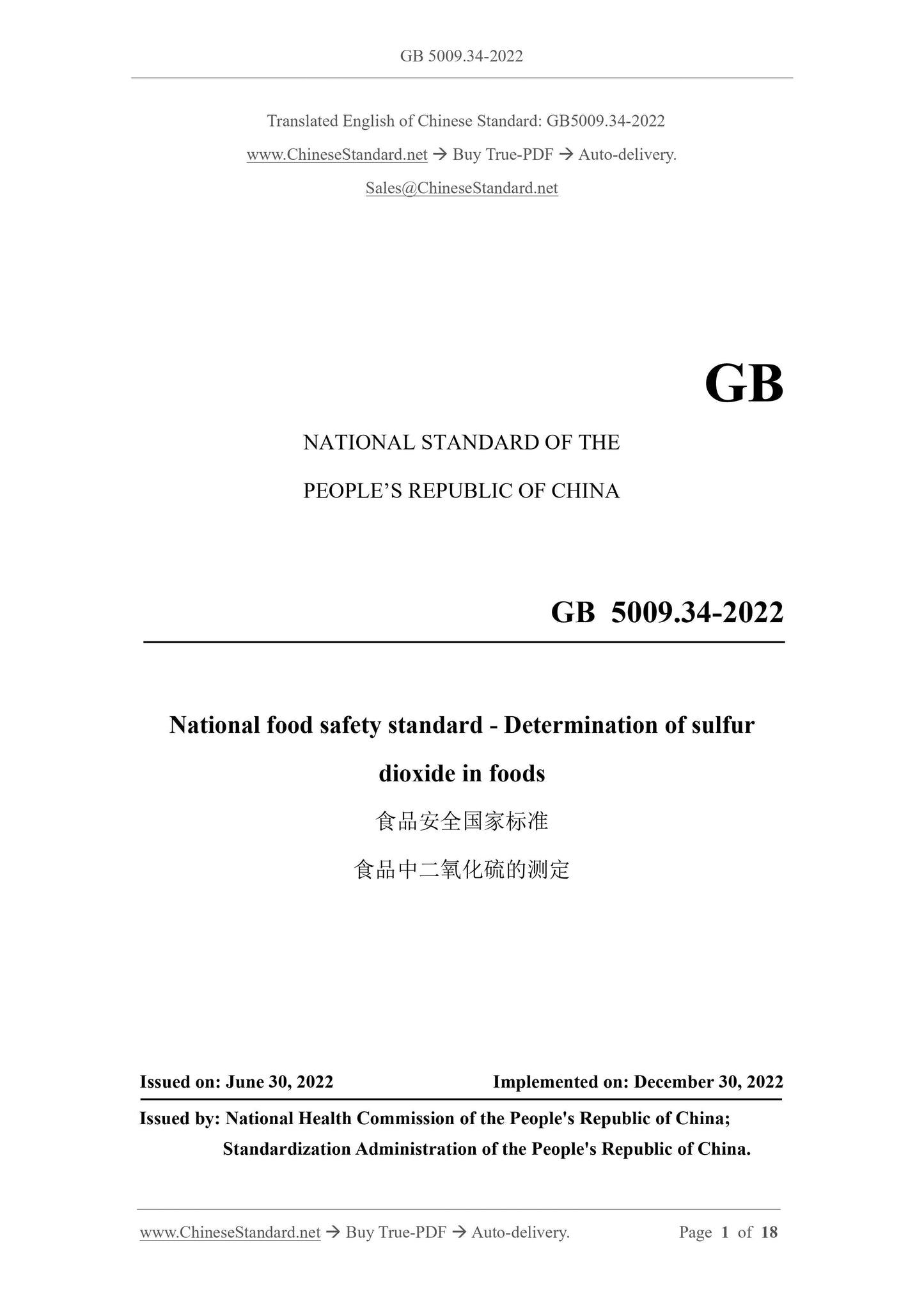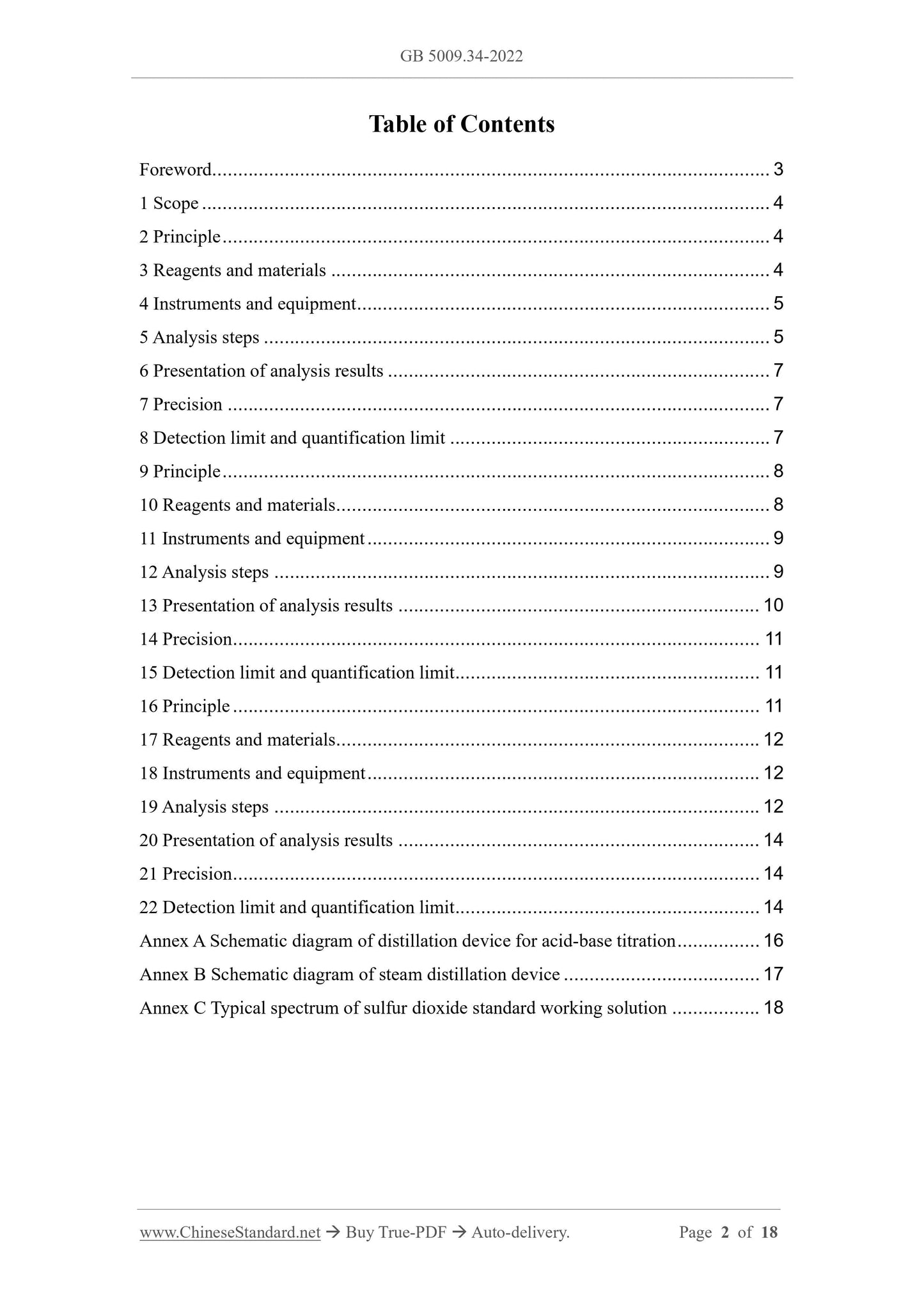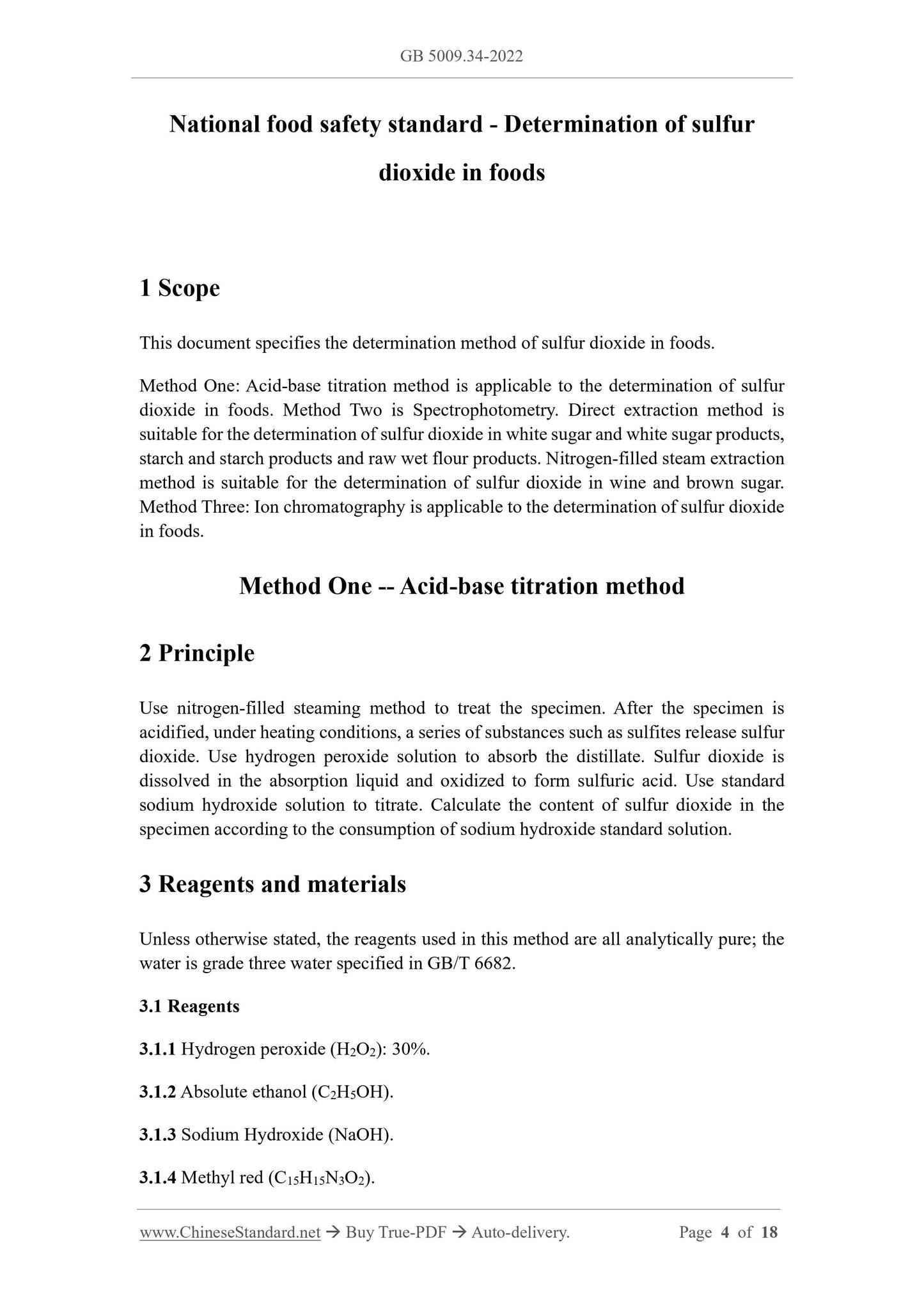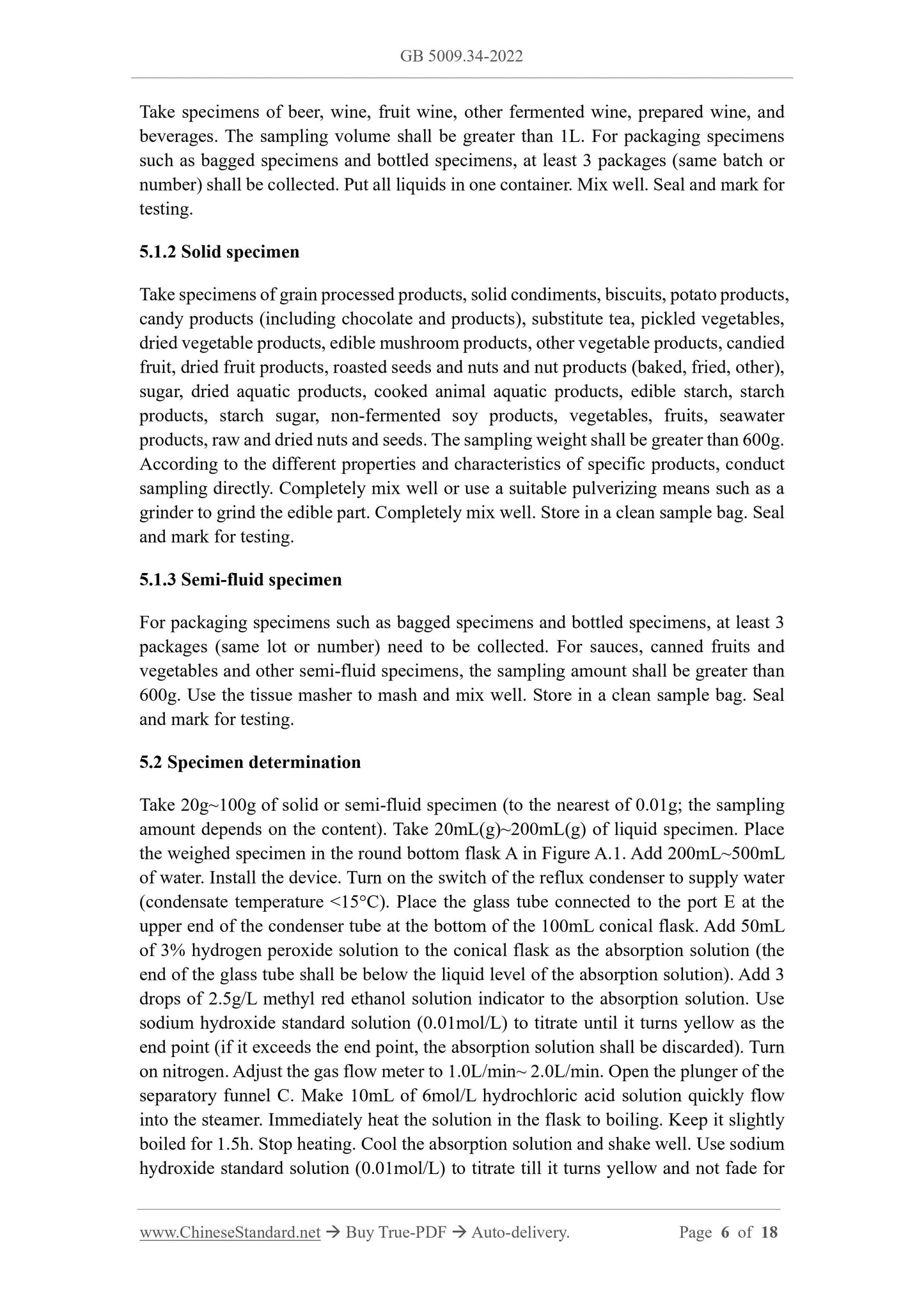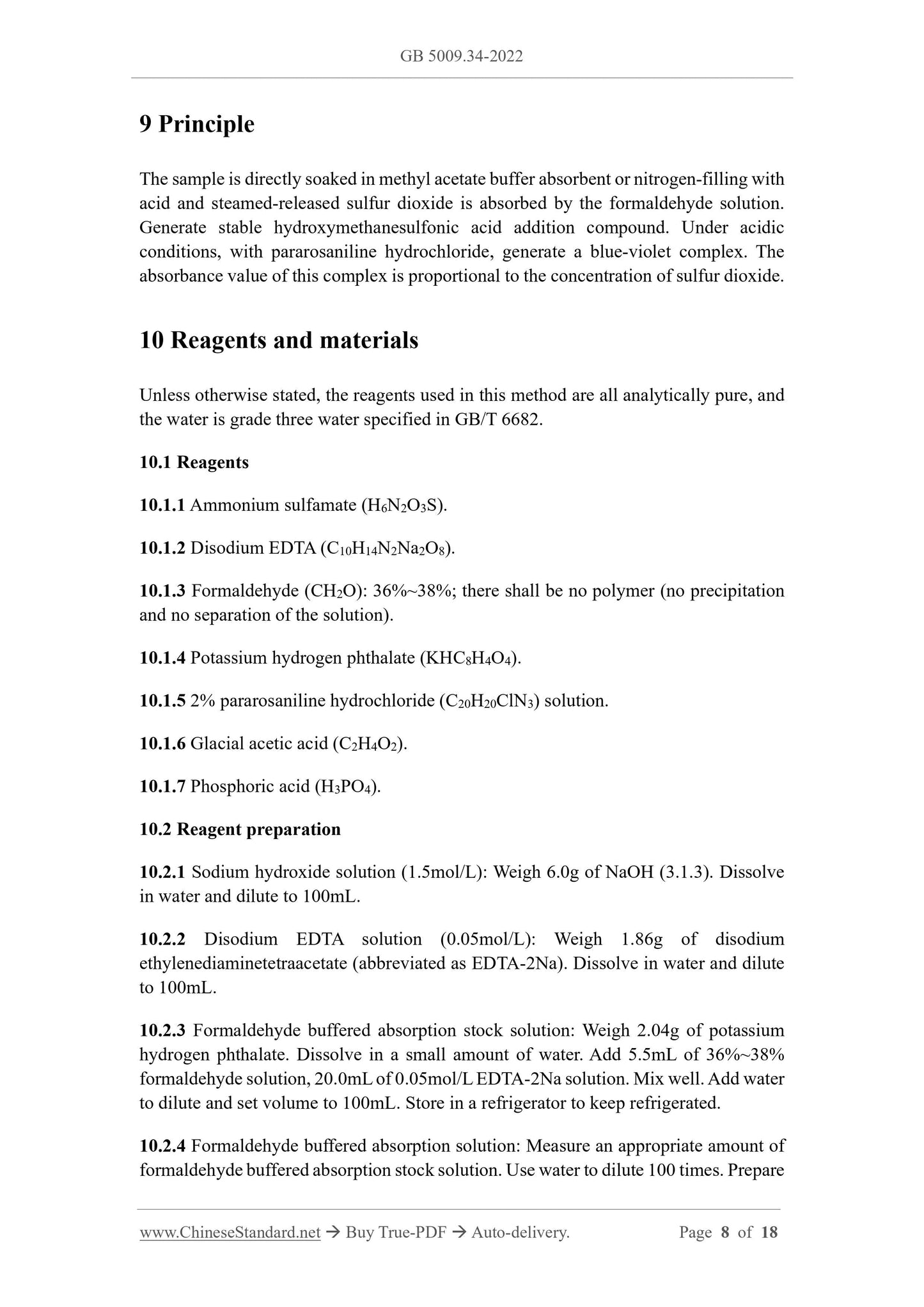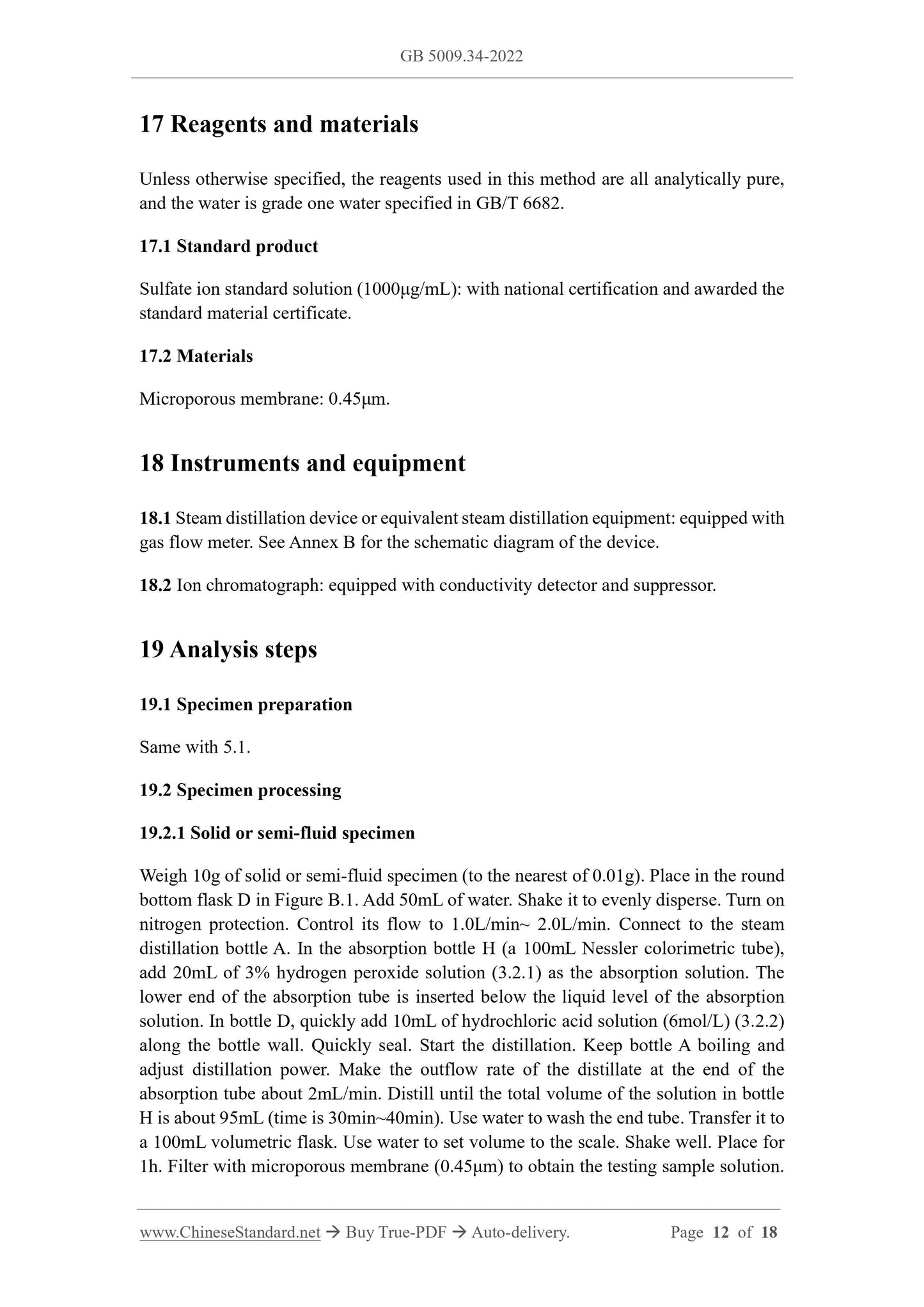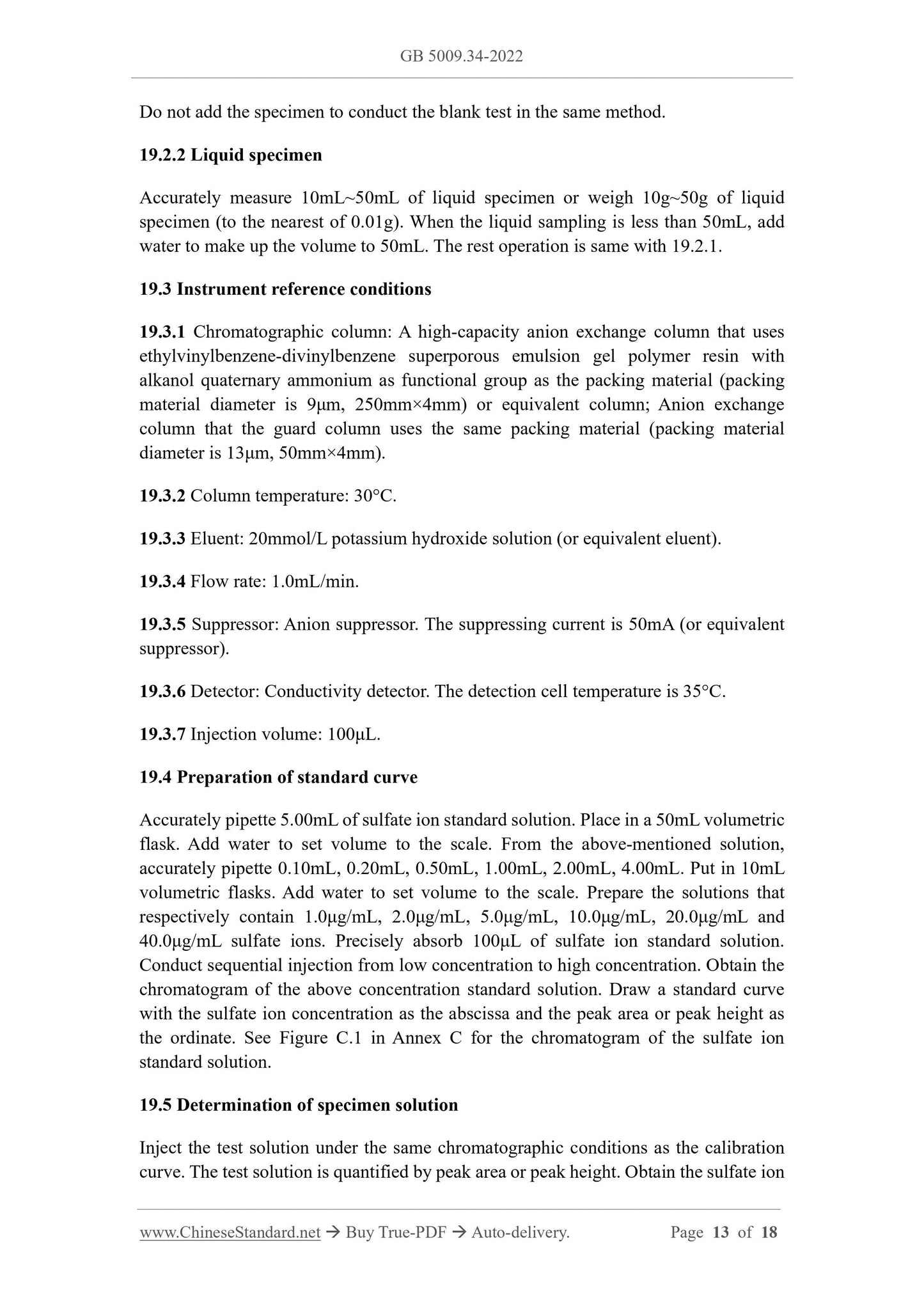1
/
of
7
www.ChineseStandard.us -- Field Test Asia Pte. Ltd.
GB 5009.34-2022 English PDF
GB 5009.34-2022 English PDF
Regular price
$215.00
Regular price
Sale price
$215.00
Unit price
/
per
Shipping calculated at checkout.
Couldn't load pickup availability
GB 5009.34-2022: National food safety standard - Determination of sulfur dioxide in foods
Delivery: 9 seconds. Download (and Email) true-PDF + Invoice.Get Quotation: Click GB 5009.34-2022 (Self-service in 1-minute)
Newer / historical versions: GB 5009.34-2022
Preview True-PDF
Scope
This document specifies the determination method of sulfur dioxide in foods.Method One. Acid-base titration method is applicable to the determination of sulfur
dioxide in foods. Method Two is Spectrophotometry. Direct extraction method is
suitable for the determination of sulfur dioxide in white sugar and white sugar products,
starch and starch products and raw wet flour products. Nitrogen-filled steam extraction
method is suitable for the determination of sulfur dioxide in wine and brown sugar.
Method Three. Ion chromatography is applicable to the determination of sulfur dioxide
in foods.
Method One -- Acid-base titration method
Basic Data
| Standard ID | GB 5009.34-2022 (GB5009.34-2022) |
| Description (Translated English) | National food safety standard - Determination of sulfur dioxide in foods |
| Sector / Industry | National Standard |
| Classification of Chinese Standard | X09 |
| Word Count Estimation | 14,137 |
| Issuing agency(ies) | National Health Commission of the People's Republic of China, State Administration for Market Regulation |
Share
